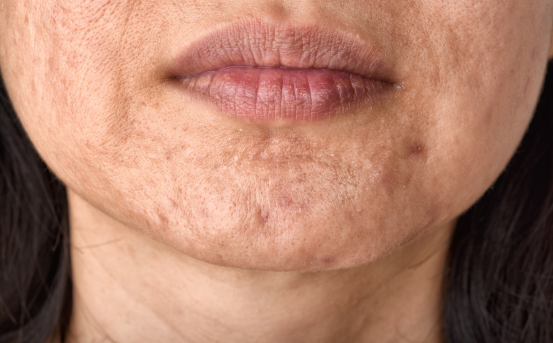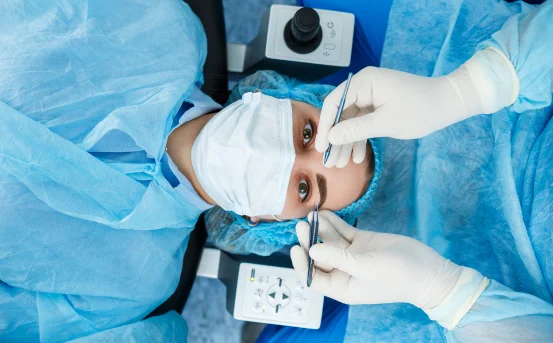Subcision for Acne Scars Treatment is a minor surgical procedure that targets the fibrotic strands pulling down the skin, causing depressed or rolling acne scars. But how do you know if you’re a good candidate for this treatment? Acne is one of the most common skin concerns worldwide. For many, it leaves more than temporary blemishes it leaves deep, permanent scars that affect self-esteem and quality of life. While various treatments exist for acne scarring, one method stands out for treating deep, tethered scars subcision.
Acne is a common skin condition that affects millions of people globally, especially during adolescence and early adulthood. While active acne breakouts can be frustrating, the long-term effects are often more distressing. One of the most difficult consequences of acne is scarring, particularly atrophic acne scars the kind that leave your skin looking uneven, pitted, or textured.
What Is Subcision for Acne Scars Treatment?
Subcision for acne scars treatment, also known as subcutaneous incisionless surgery, is a minimally invasive dermatological procedure used to treat atrophic (depressed) scars, particularly rolling acne scars.
Here’s how it works :-
-
A fine needle is inserted into the skin.
-
The needle is moved in a fan-like motion to break the fibrous bands tethering the scar to deeper tissues.
-
Once released, the skin rises, making the scar less visible and more even with surrounding skin.
-
This process also stimulates collagen production, further improving skin texture over time.
It is often combined with other treatments such as micro needling, dermal fillers, or laser resurfacing for enhanced results.
Key symptoms indicating subcision for acne scars treatment
So, how do you know if subcision for acne scars treatment is right for you? Let’s look at the primary symptoms and scar characteristics that make someone a good candidate for this treatment.
You Have Rolling Acne Scars
Rolling scars are soft, undulating depressions on the skin that give the surface a wavy appearance. These scars are caused by fibrous bands pulling the skin downward. Subcision for acne scars treatment is especially effective for this type of scarring because it directly targets and releases these fibrous tethers.
Symptoms to look for :-
-
Depressed scars with sloped edges
-
Scars that become less visible when you stretch the skin
-
A textured or uneven surface on cheeks, temples, or jawline
Your Scars Are Tethered or Bound
One of the strongest indicators for subcision for acne scars treatment is the presence of tethered scars. Tethering refers to the scar being physically bound to underlying tissues, preventing the skin from rising naturally.
How to check :-
-
Place your fingers on both sides of the scar and stretch the skin.
-
If the scar elevates or disappears temporarily, it may be tethered.
-
Tethered scars often feel firm or tight, especially when compared to surrounding skin.
You Experience Skin Tightness Around the Scars
Tethered scars not only pull the skin down visually but can also create a feeling of tightness in the affected area. This sensation is caused by the fibrotic tissue strands restricting natural skin movement.
Symptoms :-
-
A constant or intermittent feeling of tightness or restriction
-
Discomfort when smiling, speaking, or making facial expressions
-
Skin feels less elastic around the scarred region
Your Scars Are Resistant to Other Treatments
Have you tried creams, chemical peels, or micro needling without much success? If your scars haven’t responded well to topical or non-invasive treatments, it might indicate that the problem lies below the skin surface, where only subcision can reach.
Indicators :-
-
Lack of improvement despite multiple sessions of surface-level treatments
-
Persistent depressions that don’t respond to laser or peels
-
Scars that seem anchored in place, no matter the skincare regimen
You Have No Active Acne Breakouts
Subcision for acne scars treatment is best performed when there are no active acne lesions. This reduces the risk of infection or worsening inflammation.
Why this matters :-
-
Subcision involves breaking through the skin, and active acne can introduce bacteria.
-
Your skin needs to heal effectively, and inflammation can impair that process.
-
Dermatologists typically recommend waiting until your acne is under control before undergoing subcision.
You Have Realistic Expectations and Patience for Gradual Results
Subcision is highly effective, but it’s not a magic bullet. Most patients require multiple sessions spaced weeks apart to see optimal results. Improvement is often gradual as the skin heals and collagen rebuilds over time.
Good candidates :-
-
Understand that full results may take months
-
Are willing to follow aftercare instructions
-
May combine subcision with other collagen-inducing treatments
What Types of Acne Scars Are Not Suitable for Subcision?
While subcision for acne scars treatment works well for certain types of scars, it’s not suitable for all acne scars.
Avoid subcision if you primarily have :-
-
Ice-pick scars :- Narrow, deep scars that require punch excision or TCA CROSS technique.
-
Boxcar scars :- These may respond better to laser resurfacing or dermal fillers.
-
Hypertrophic or keloid scars :- These raised scars are not treated by subcision and may actually worsen with invasive procedures.
Additional Signs You’re Ready for Subcision Treatment
Beyond the physical symptoms of scarring, there are emotional and lifestyle signs that you may be ready to consider subcision :-
-
You avoid taking photos or being in bright lighting.
-
You’ve lost confidence in social settings due to skin texture.
-
You’re willing to invest time and money in a proven treatment.
-
You’re committed to post-treatment care (avoiding sun exposure, following a skincare routine, etc.).
The Subcision Procedure: What to Expect?
If the symptoms match and you’re considering treatment, here’s what typically happens :-
-
Consultation :- A dermatologist evaluates your scar type and skin health.
-
Preparation :- Your face is cleansed, and a local anesthetic is applied.
-
Procedure :- Using a fine needle (usually Nokor or cannula), the doctor breaks the fibrous bands beneath the scar.
-
Post-care :- You may experience swelling, bruising, or tenderness for a few days.
-
Follow-up :- Multiple sessions may be required for optimal improvement.
Recovery is usually quick, and most people return to normal activities within a few days.
Conclusion
If you have tethered, rolling, or depressed scars that aren’t improving with other treatments, symptoms indicating subcision for acne scars treatment may be your best option. The key indicators such as scars that lift when stretched, tight skin, or unresponsive scars are strong signs you may benefit from this effective, minimally invasive procedure.























